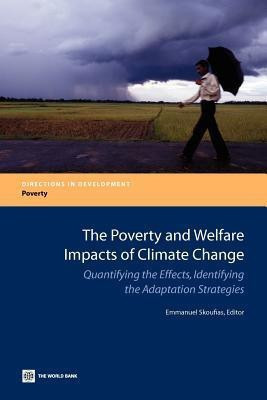The Poverty and Welfare Impacts of Climate Change(English, Paperback, Skoufias Emmanuel)
Quick Overview
Product Price Comparison
Over the past century, the world has seen a sustained decline in the proportion of people living in poverty, but climate change could challenge poverty reduction efforts. On the Poverty and Welfare Impacts of Climate Change: Quantifying the Effects, Identifying the Adaptation Strategies surveys the relevant research on how climate change may affect global poverty rates and presents country-specific studies with implications for low-income rural populations as well as governments' risk management programs. An evidence review examines three main strands of the literature. Unsurprisingly, the impacts of climate change are shown to be generally regressive-falling more heavily on the poor than on the rich. However, most estimates have tended to ignore the effect of aggregate economic growth on poverty and household welfare. With continued growth, the evidence suggests that the poverty impact will be relatively modest and will not reverse the major decline in poverty expected over the next 40 years. Sector-specific studies-focusing on how climate change may affect agricultural yields-are generally poor predictors of national-level poverty impacts because of heterogeneity in the ability of households to adapt. That heterogeneity features prominently in studies of how weather shocks affect rural households in Indonesia and Mexico. Erratic deviations from long-term weather patterns affect growing cycles and thereby rural households' consumption (per capita expenditure) and health indicators. In Indonesia, the affected households appeared able to protect food expenditures at the expense of nonfood expenditures, and their access to credit and community public-works projects had the strongest moderating effects. In Mexico, weather shocks affected both food and nonfood consumption in ways that varied by both region and timing. The affected households' ability to smooth consumption depended on factors including proximity to bus stations. In some regions, weather shocks also had measurable stunting effects on the stature of children between 12 and 47 months of age, perhaps from changes in household income, increases in communicable diseases, or both. Overall, more region-specific analyses within more finely tuned climate categories will help researchers to better estimate the effects of climate change on poverty and the effectiveness of government-level strategies to address those effects. This book will be of interest to academics, and decision makers in government and nongovernmental organizations, seeking to design climate-smart poverty alleviation and safety net programs based on evidence.


